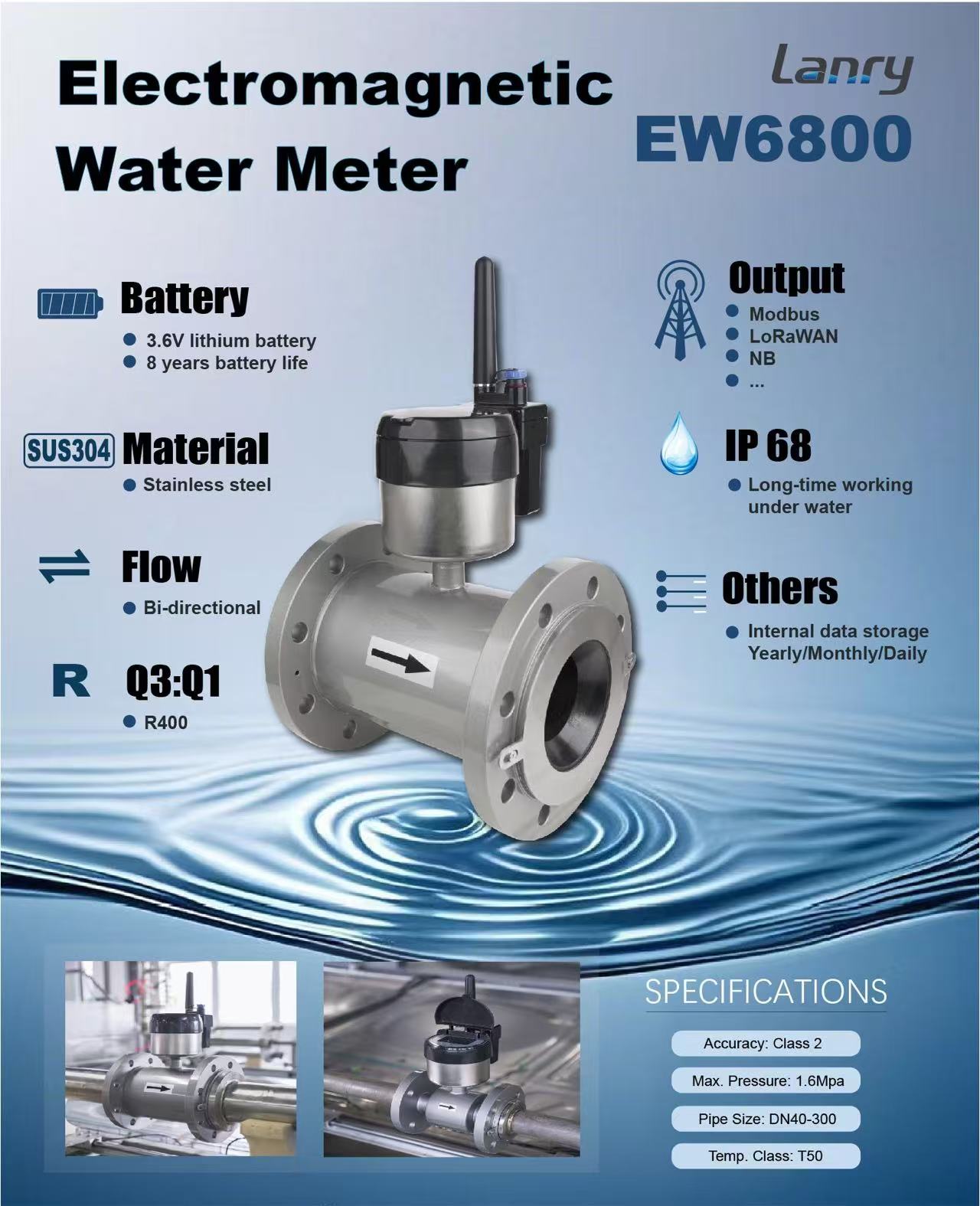1. Exceptional Measurement Accuracy
1.1 Principle - Driven Precision
Electromagnetic water meters function based on Faraday's law of electromagnetic induction. When electrically conductive water flows through a magnetic field generated by the meter, a voltage is induced. This induced voltage is directly proportional to the flow velocity of the water. The absence of moving parts within the flow path means there is no mechanical wear that could affect the measurement accuracy over time. For example, in industrial processes where precise water measurement is crucial for product quality control, such as in the pharmaceutical or food and beverage industries, electromagnetic water meters can provide highly accurate readings, ensuring consistent production standards.
1.2 Wide Flow Range Capability
These meters are capable of accurately measuring a broad spectrum of flow rates. They can detect extremely low flow rates, such as the slow leakage from a pipe, with the same precision as high - volume flows during peak usage periods in large industrial complexes or urban water supply systems. This wide - ranging accuracy makes them suitable for diverse applications, from small - scale domestic water metering to large - scale industrial and municipal water management.
2. Low Maintenance Requirements
2.1 Absence of Moving Parts
One of the significant advantages of electromagnetic water meters is the lack of moving components within the water - flow area. In contrast to mechanical water meters, which rely on moving impellers or diaphragms that are prone to wear and tear, electromagnetic water meters have no such parts to break down. This absence of moving parts reduces the frequency of maintenance and replacement. For instance, in water supply systems in remote areas where access for maintenance is difficult and costly, the low - maintenance nature of electromagnetic water meters is a major advantage. They can operate for extended periods without the need for frequent servicing, minimizing downtime and associated costs.
2.2 Resistance to Water Quality Issues
Electromagnetic water meters are relatively immune to water quality variations. They are not affected by sediment, suspended solids, or small amounts of impurities in the water. In areas with poor - quality water, traditional mechanical meters may experience clogging or inaccurate readings due to the build - up of sediment on moving parts. However, electromagnetic water meters can function effectively in such conditions, ensuring reliable water measurement regardless of the water's composition.
3. Advanced Data Transmission and Monitoring
3.1 Wireless Communication Options
Modern electromagnetic water meters are often equipped with wireless communication capabilities. They can be integrated with various wireless protocols, such as Bluetooth, Wi - Fi, or cellular networks. This enables real - time data transmission of water flow rates and consumption data to a central monitoring system. Utility companies can remotely monitor water usage in thousands of households and industrial facilities without the need for manual meter readings. Homeowners can also use mobile applications to access their water consumption data, allowing for better water management and the early detection of leaks.
3.2 Data Logging and Analysis
These meters can log historical data, including hourly, daily, and monthly water consumption. This data can be analyzed to identify usage patterns, detect anomalies, and plan for future water supply requirements. For example, a municipality can analyze the data from electromagnetic water meters across the city to understand peak usage times and allocate resources accordingly for water treatment and distribution. In industrial settings, data analysis can help optimize water usage in manufacturing processes, leading to cost savings and improved efficiency.
In conclusion, electromagnetic water meters offer a combination of high accuracy, low maintenance, and advanced data - related features. Their performance advantages make them an ideal choice for a wide range of water measurement applications, contributing to more efficient water management in both domestic and industrial sectors.

Post time: Mar-03-2025

